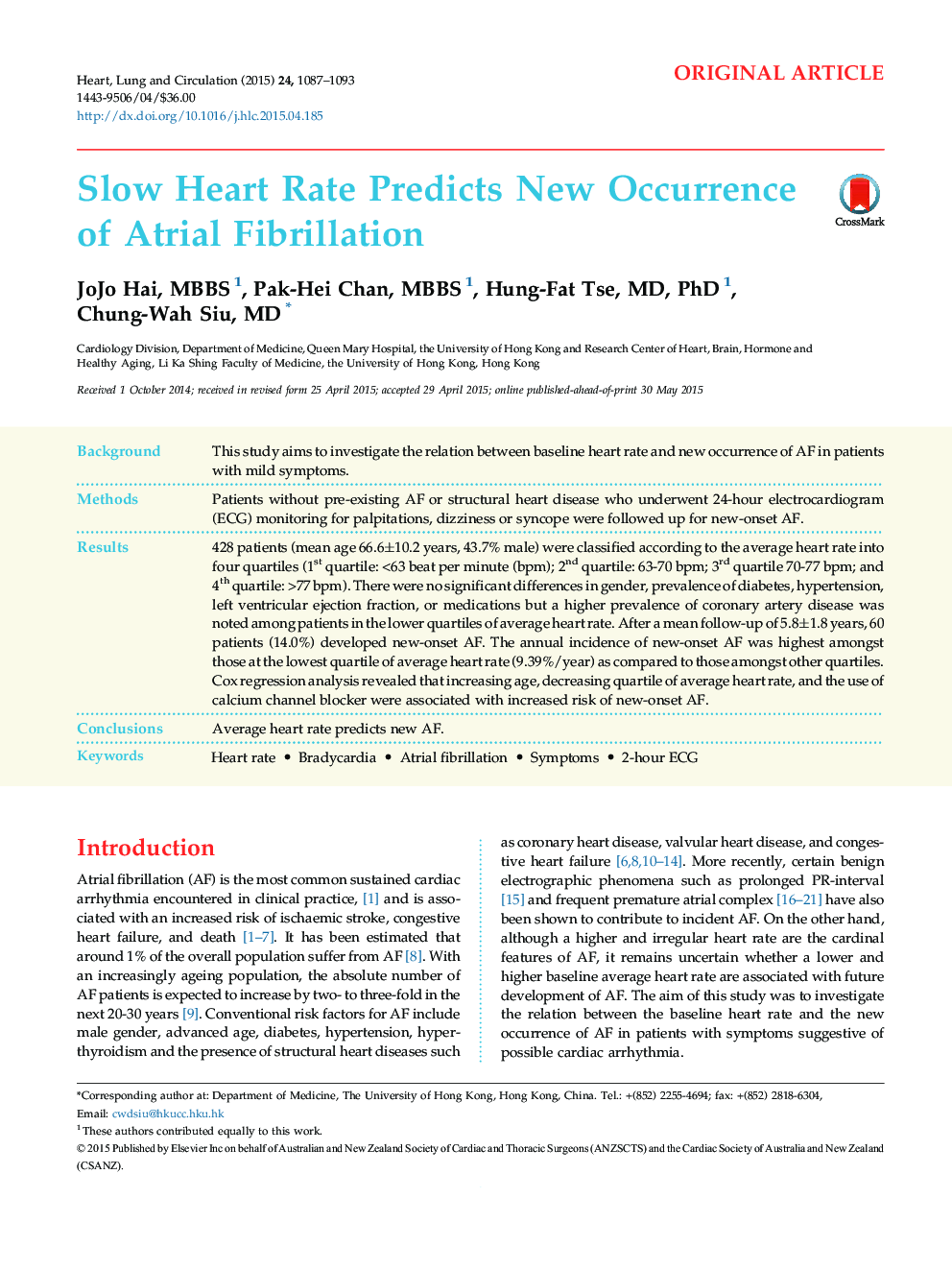| Article ID | Journal | Published Year | Pages | File Type |
|---|---|---|---|---|
| 2917383 | Heart, Lung and Circulation | 2015 | 7 Pages |
BackgroundThis study aims to investigate the relation between baseline heart rate and new occurrence of AF in patients with mild symptoms.MethodsPatients without pre-existing AF or structural heart disease who underwent 24-hour electrocardiogram (ECG) monitoring for palpitations, dizziness or syncope were followed up for new-onset AF.Results428 patients (mean age 66.6±10.2 years, 43.7% male) were classified according to the average heart rate into four quartiles (1st quartile: <63 beat per minute (bpm); 2nd quartile: 63-70 bpm; 3rd quartile 70-77 bpm; and 4th quartile: >77 bpm). There were no significant differences in gender, prevalence of diabetes, hypertension, left ventricular ejection fraction, or medications but a higher prevalence of coronary artery disease was noted among patients in the lower quartiles of average heart rate. After a mean follow-up of 5.8±1.8 years, 60 patients (14.0%) developed new-onset AF. The annual incidence of new-onset AF was highest amongst those at the lowest quartile of average heart rate (9.39%/year) as compared to those amongst other quartiles. Cox regression analysis revealed that increasing age, decreasing quartile of average heart rate, and the use of calcium channel blocker were associated with increased risk of new-onset AF.ConclusionsAverage heart rate predicts new AF.
